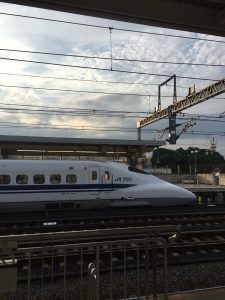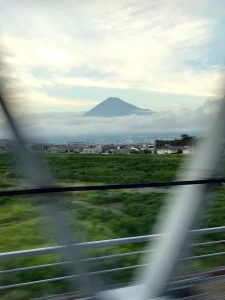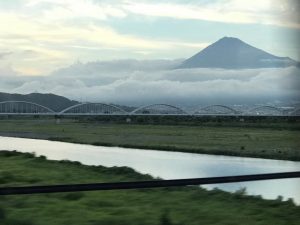Hakone: Volcanic Eggs and Fuji
Having spent a few hectic days in Tokyo, living at the same fast pace as the heart of the city, we were ready for a rest – a retreat. However, as tourists, an eagerness remained to see and experience Japanese highlights that had previously only been ideas tacked up on the wall, famous landmarks only pictures in a guidebook. The perfect combination of these two sentiments was to travel to Hakone, an area not far from Tokyo that also provided an opportunity to see the much discussed Mt. Fuji, the tallest and most celebrated of Japan’s ‘Three Holy Mountains’.
We were to be staying in a onsen hotel, which had rooms in the traditional Japanese style of tatami woven floor mats and minimalistic decoration. Reaching it however was far from a simple process; the crowded single-track train up the mountain was excitingly precipitous, taking us to an altitude of 1750ft. Upon arrival at Gora station though, we discovered further climbing – this time on foot up a very steep hill, while trailing all our luggage!
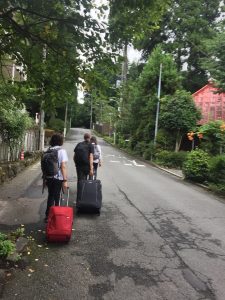
Onsen, a very long-standing and popular method of relaxation for Japanese people, are hot communal baths often fed by spring waters with many minerals (meant to be good for the skin). Our hotel had both indoor and outdoor pools, and after the somewhat arduous journey to reach it, a soak was much needed! We changed into our cotton yukata provided, and embraced the traditional Japanese communal bathing practice.
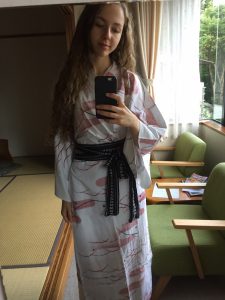
After some recuperation time, we headed to the nearby Hakone Open Air Museum, a sculpture park where we were interested to find many works by Picasso and Henry Moore interspersed with the work of Japanese artists. The well designed smooth aesthetic of the park further contributed to our mental recharge, and we were even able to feed some huge koi carp.
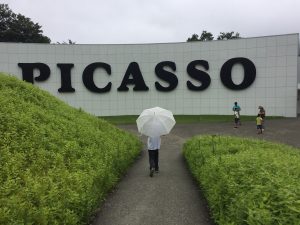
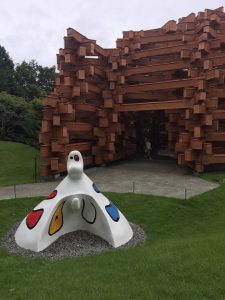

The following day came our true purpose in travelling to the Hakone area: we headed up the mountain by cablecar and ropeway to Owakudani, a volcanic area with active sulphuric vents and hot springs. The Hakone Ropeway very excitingly traversed the steaming pits, though we were glad of the wet towels provided to all passengers to avoid the noxious fumes. At this heavily touristic site, we purchased the characteristic black eggs of Hakone, which are cooked in the hot springs of the mountain. According to locals, just one of these sulphuric eggs will lengthen your lifespan by seven years!
On a clear day, Mt Fuji would have been visible in all its might, however we saw only one edge loom from behind the clouds.
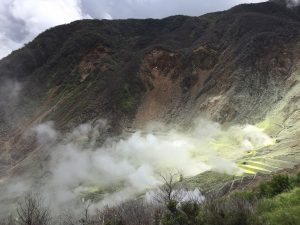
The next leg of the day’s excursion was a boat across Lake Ashi, a short ropeway ride down the other side of the mountain. We were in Japan though: the boat was in fact a pirate ship, complete with rigging and captain’s cabin! After disembarkation from this novel transportation the length of the lake, we wandered through a lovely lakeside town and along a nearby cedar lined path. Uphill hiking quickly proved too strenuous though in the hot and humid air, and we stopped to sample the longevity boosting eggs.
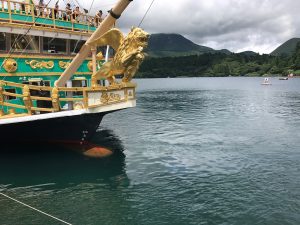
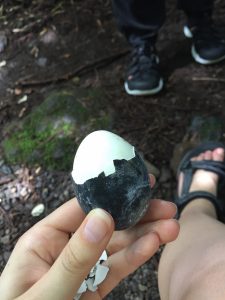
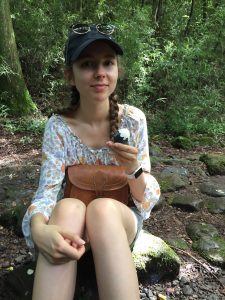
The very same evening, we were already on the move – at huge speed! We took the Shinkansen bullet train to from the Hakone area to Kyoto. To our delight, it seemed we were fated to see Fuji after all – from the train we got an excellent view of the perfect mountain, but had to be quick with the cameras, as the Shinkansen bore us away all too quickly. Our short yet action-packed time in Hakone made a welcome change from the closeness of Tokyo, and though highly geared towards tourists, the area is well worth a visit.
